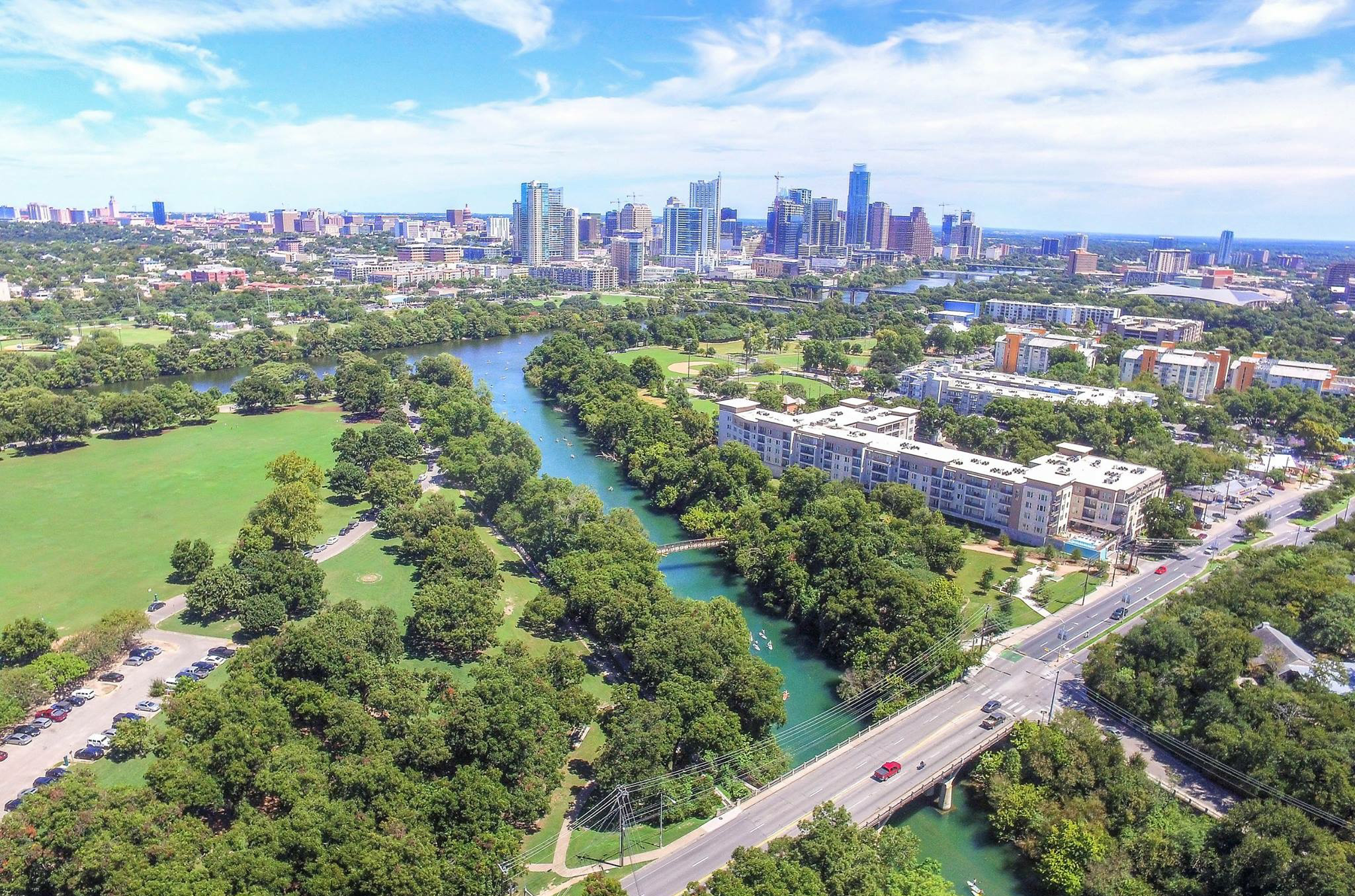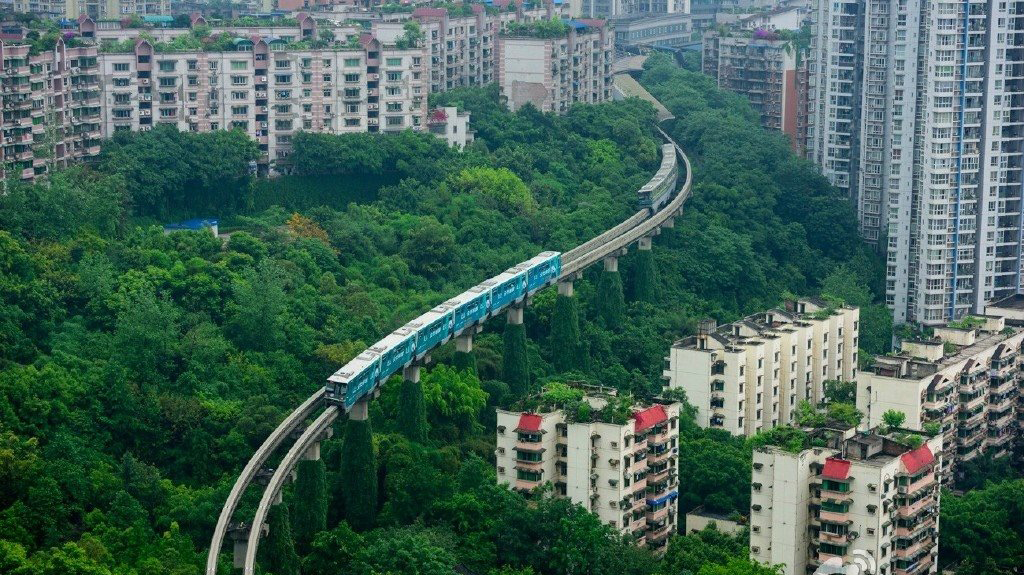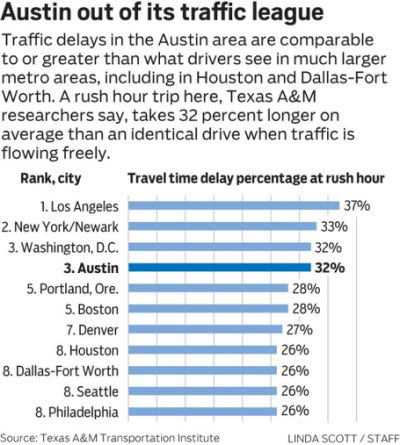 Monorail for Austin: safe, fast, and environmentally sound.
Monorail for Austin: safe, fast, and environmentally sound.
Monorail is a revolutionary alternative to Austin’s chronic automobile traffic congestion. Improving our community’s transportation systems should be one of the highest public policy priorities. Please urge the Austin City Council members to support monorail for Austin.
Call (512) 978-2130 and email Mayor Adler http://www.austintexas.gov/email/steveadler
"Mayor Adler, please support a safe/fast monorail for the city of Austin, not a dangerous slow light-rail".
http://www.austintexas.gov/page/new-city-council-members
How Los Angeles Rejected the Monorail
Quick to Build:
- Columns and beams can be pre-fabricated and assembled on site in a matter of hours
- Negligible impact to businesses during construction
Environmentally Friendly:
- Electric Powered
- Quiet, Unobtrusive
- Can be designed to enhance neighborhoods
Small Footprint:
- Narrow beams reduce overshadow
- Columns and beams can be designed to enhance community character
Proven Technology:
- Monorails have been in operation since 1901
- Many rapid transit monorails in operation around the world
Elevated, thus assuring:
- Guaranteed Arrival Time; won’t get stuck in traffic
- Does not add to street congestion
- Safe- No possibility of collision with vehicles, bicycles, or pedestrians
Cost Effective:
- Capital costs comparable to street rail
- Operation and maintenance costs always lower than street rail
- Can be automated to reduce operating costs
- Can turn a profit!!
*NOTE: the chart above originated from a portion of AustinMonorail.org
Monorail Moscow - 10 Years of Successful Operation (click here for VIDEO)
--little if any rework of utilities required.
-- Easily expandable to meet growing ridership demand. Suitable for Austin's many diverse mobilty needs. Easily retrofitted to dense cities. Examples include Tokyo, Kuala Lumpur , Chongqing China,Sao Paulo, Brazil
--very small disruption to automobile traffic while monorail columns are installed
--Safe, no crossing of street or tracks to board monorail: only ticket holders can get to passenger loading platform; no monorail derailment has occurred.
-24/7 monorail operation possible due to automation.
-Stations are ideally suited for intermodal transfer and concessions (coffee shop, news stand, cleaner, 7/11, togo car pariking bike rack, etc)
- Due to offsite construction, installation of track can be as fast as 1 mile per month with overall construction time less than 1/2 half of light rail.
**Attractive to city visitior -- a way to view the town from above the hustle and bustle of the street.
** Mall and hotels would pay for station construction to bring traffic into their facilities (large complexes ie YT, Dell, IBM, might also)
** Airport service and edge of town park & ride easily accommodated.
Austin continues to have the third-worst traffic problem of any city in the United States (Texas Transportation Institute) and our air is so polluted the American Lung Association gives our community a failing grade because of the extremely high ozone air pollution at ground level which causes serious health problems.
An excellent location for Austin's monorail hub would be the Long Center. Centrally located on Lady Bird Lake, the underused parking garage could be utilized, providing access to Zilker Park's popular activities including Austin City Limits Fest, Barton Springs Pool, Trail of Lights, Kite Fest, soccer tournaments, and potentially many more events throughout the city.
For the north/south transit corridor a monorail system on Lamar Boulevard would be ideal. Eyesores such as utility wires and telephone poles that clutter the sidewalks could be consolidated into the monorail's columns every 120 feet. This improvement would increase sidewalk space and and bicycle lanes could be expanded.
Several east/west loops could be designed to include Enfield Road (15th Street), the University of Texas campus, the State Capitol Complex, Cesar Chavez Street, Riverside Drive and Austin-Bergstrom International Airport.
Please send us your suggested routes for a monorail Austin network. (click here to locate streets/trails for monorail lines and designate monorail stops/stations)

Safety
Many safety features are built into modern transit monorail systems making
them far safer than any of Australia's small tourist monorails.
- A second or third monorail train could be used to evacuate passengers from
a stranded or damaged monorail train, although in practice this has never
been necessary. (Note that evacuation via the front of the monorail is only
feasible with Hitachi designs as they have doors at the front and
rear.)

- Emergency stairs would be placed at intervals along the monorail line
(especially low-points) that would allow passengers to exit to the ground from
the above walkway in the event of an unexpected stop.
- All the recommended monorail designs allow passage between carriages for
all passengers including those in a wheel chair. We recommend fire-resistant
doors be fitted to trains to allow some partitioning of the train. We also
recommend large CO2 extinguishers be carried on the trains.
- Elevated rail systems are inherently safer than subway systems due to the
speed at which most elevated trains can be reached from the ground compared
to stranded subway vehicles deep in the ground.
- Passengers on a burning elevated monorail train are less likely to be
overcome with smoke and fumes than passengers on a burning subway car,
especially if internal fire doors were fitted to the monorail.
- Where monorail pylons are located on or near road or rail lines they
should be built to withstand substantial impacts without collapse.
- Monorail beams will not cross roads with a height clearance less than
other existing infrastructure or the maximum height allowable for
trucks.
- The monorail should draw power at multiple points and have regular back-up
generators capable of at least moving the monorail carriages to the next
station.

Capacity
Capacity depends on the time between services, the number of carriages and
the loading per square meter. Loading Capacity (Passengers per hour per
direction) can then be calculated.
The following data is from Hitachi Rail for their medium-sized monorail product with a
loading of four person's per square meter which would be considered the maximum
loading in Australia.
Note that the system can be expanded over time. Initially two-car trains
could be used at 10 minute intervals and then gradually ramped up to eight-car
trains every three minutes.
Eight-carriage trains would be about 100 meters long.
Passengers per hour per direction
Headway
(min)
No. of Trains
(per hour)
2-Car Train
3-Car Train
4-Car Train
8-Car Train
3
20
3,680
5,740
7,800
15,600
4
15
2,760
4,305
5,850
11,700
5
12
2,208
3,444
4,680
9,360
6
10
1,840
2,870
3,900
7,800
MONORAILAUSTIN. ALL RIGHTS RESERVED 2014.
Quick to Build:
|
Environmentally Friendly:
|
Small Footprint:
|
Proven Technology:
|
Elevated, thus assuring:
|
Cost Effective:
|
*NOTE: the chart above originated from a portion of AustinMonorail.org
Monorail Moscow - 10 Years of Successful Operation (click here for VIDEO)
--little if any rework of utilities required.
-- Easily expandable to meet growing ridership demand. Suitable for Austin's many diverse mobilty needs. Easily retrofitted to dense cities. Examples include Tokyo, Kuala Lumpur , Chongqing China,Sao Paulo, Brazil
--very small disruption to automobile traffic while monorail columns are installed
--Safe, no crossing of street or tracks to board monorail: only ticket holders can get to passenger loading platform; no monorail derailment has occurred.
-24/7 monorail operation possible due to automation.
-Stations are ideally suited for intermodal transfer and concessions (coffee shop, news stand, cleaner, 7/11, togo car pariking bike rack, etc)
- Due to offsite construction, installation of track can be as fast as 1 mile per month with overall construction time less than 1/2 half of light rail.
**Attractive to city visitior -- a way to view the town from above the hustle and bustle of the street.
** Mall and hotels would pay for station construction to bring traffic into their facilities (large complexes ie YT, Dell, IBM, might also)
** Airport service and edge of town park & ride easily accommodated.
Austin continues to have the third-worst traffic problem of any city in the United States (Texas Transportation Institute) and our air is so polluted the American Lung Association gives our community a failing grade because of the extremely high ozone air pollution at ground level which causes serious health problems.
An excellent location for Austin's monorail hub would be the Long Center. Centrally located on Lady Bird Lake, the underused parking garage could be utilized, providing access to Zilker Park's popular activities including Austin City Limits Fest, Barton Springs Pool, Trail of Lights, Kite Fest, soccer tournaments, and potentially many more events throughout the city.
For the north/south transit corridor a monorail system on Lamar Boulevard would be ideal. Eyesores such as utility wires and telephone poles that clutter the sidewalks could be consolidated into the monorail's columns every 120 feet. This improvement would increase sidewalk space and and bicycle lanes could be expanded.
Several east/west loops could be designed to include Enfield Road (15th Street), the University of Texas campus, the State Capitol Complex, Cesar Chavez Street, Riverside Drive and Austin-Bergstrom International Airport.
Please send us your suggested routes for a monorail Austin network. (click here to locate streets/trails for monorail lines and designate monorail stops/stations)
Safety
Many safety features are built into modern transit monorail systems making them far safer than any of Australia's small tourist monorails.
- A second or third monorail train could be used to evacuate passengers from
a stranded or damaged monorail train, although in practice this has never
been necessary. (Note that evacuation via the front of the monorail is only
feasible with Hitachi designs as they have doors at the front and
rear.)

- Emergency stairs would be placed at intervals along the monorail line (especially low-points) that would allow passengers to exit to the ground from the above walkway in the event of an unexpected stop.
- All the recommended monorail designs allow passage between carriages for all passengers including those in a wheel chair. We recommend fire-resistant doors be fitted to trains to allow some partitioning of the train. We also recommend large CO2 extinguishers be carried on the trains.
- Elevated rail systems are inherently safer than subway systems due to the speed at which most elevated trains can be reached from the ground compared to stranded subway vehicles deep in the ground.
- Passengers on a burning elevated monorail train are less likely to be overcome with smoke and fumes than passengers on a burning subway car, especially if internal fire doors were fitted to the monorail.
- Where monorail pylons are located on or near road or rail lines they should be built to withstand substantial impacts without collapse.
- Monorail beams will not cross roads with a height clearance less than other existing infrastructure or the maximum height allowable for trucks.
- The monorail should draw power at multiple points and have regular back-up generators capable of at least moving the monorail carriages to the next station.
Capacity
Capacity depends on the time between services, the number of carriages and the loading per square meter. Loading Capacity (Passengers per hour per direction) can then be calculated.
The following data is from Hitachi Rail for their medium-sized monorail product with a loading of four person's per square meter which would be considered the maximum loading in Australia.
Note that the system can be expanded over time. Initially two-car trains could be used at 10 minute intervals and then gradually ramped up to eight-car trains every three minutes.
Eight-carriage trains would be about 100 meters long.
Passengers per hour per direction
| Headway (min) |
No. of Trains (per hour) |
2-Car Train | 3-Car Train | 4-Car Train | 8-Car Train |
|---|---|---|---|---|---|
| 3 | 20 | 3,680 | 5,740 | 7,800 | 15,600 |
| 4 | 15 | 2,760 | 4,305 | 5,850 | 11,700 |
| 5 | 12 | 2,208 | 3,444 | 4,680 | 9,360 |
| 6 | 10 | 1,840 | 2,870 | 3,900 | 7,800 |